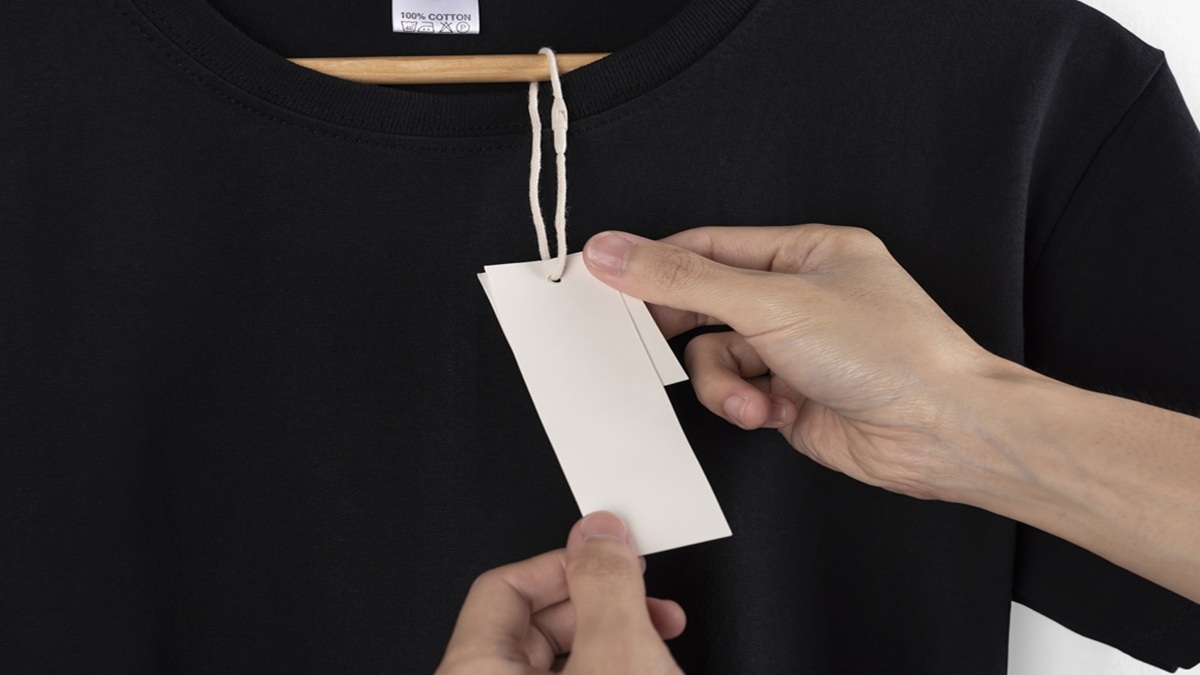A Guide to Labeling Clothes for Nursing Homes
When a loved one transitions to a nursing home or long-term care facility, a tricky task caregivers must manage is keeping clothing organized. In a shared laundry environment, where many residents’ clothes are washed together, it can be easy for garments to get mixed up or even lost. That’s where the power of labeling comes in.
At Silverts, we understand the challenges caregivers face in maintaining order, especially when it comes to keeping track of clothing. In this blog, we’ll explore why labeling nursing home clothes is so important, how to do it effectively, and how our custom clothing tags, which include space to write a resident’s name, can simplify the process for caregivers.
Why Is It Important to Label Clothes for a Nursing Home?
Reducing Clothing Mix-Ups in Shared Laundry Facilities
Nursing homes and long-term care facilities often have shared laundry rooms, where multiple residents’ clothes are washed together. Without proper labeling, it’s easy for garments—whether it’s a favorite shirt or a pair of socks—to get mixed up with someone else’s.
Enhancing the Efficiency of Nursing Staff
Nursing staff often deal with large amounts of laundry, which can be time-consuming and challenging to sort through. When clothes are labeled with the resident’s name and room number, it makes it easier for staff to quickly and efficiently identify and return the right clothes to the right person. This small step can significantly speed up the process and ensure that your loved one’s belongings are always where they should be.
Preventing the Loss of Valuable or Sentimental Items
Many residents have clothing that holds personal or sentimental value, such as a favorite sweater. Properly labeling these items ensures that they are less likely to be lost or misplaced.
4 Types of Custom Labels for Nursing Home Clothes
There are several ways to label nursing home clothes, and each method offers its own set of benefits depending on the garment and the caregiver’s preference.
#1 Adhesive Labels
Adhesive labels are one of the most convenient and time-efficient options for labeling clothing. These labels stick directly to the fabric and are designed to withstand multiple washes. They are a great choice for everyday garments like shirts, socks, and sweatpants. The process of applying adhesive labels is simple—just peel and stick, and the label stays securely attached, even through washing and drying cycles. Since these labels are often washable and waterproof, they ensure long-term durability and easy readability.
#2 Iron-On Labels
For a more permanent solution, iron-on textile tags offer an excellent option. Once applied using heat, these labels bond securely with the fabric, offering long-lasting results. Custom labels like these are ideal for most fabrics, though they should be avoided for delicate fabrics like wool or silk. This method is perfect for clothing that your loved one will wear frequently, as it provides a durable, lasting label that holds up to constant washing and drying.
#3 Sew-On Labels
For those looking for extra durability, sew-on labels are an excellent choice. These labels are ideal for high-use clothing items, such as jackets or coats, that may need extra reinforcement. Since they are sewn into the fabric, they are very secure and will last for the life of the garment. Sew-on tags also work well for delicate textiles that require special handling. While this method takes more time to apply than others, it provides the most permanent and long-lasting solution.
#4 Fabric Markers and Stamps
Another simple option is using fabric markers or stamps to write the resident’s name directly onto the clothing. This is an affordable and quick way to personalize garments, and it allows for flexibility since you can use any marker or stamp you have on hand. While this method is convenient, caregivers should ensure that the ink used is durable and designed for fabric to avoid fading after multiple washes. Fabric markers are ideal for those in need of a quick fix, and they allow for custom personalization of each item. For brand-conscious caregivers, fabric stamps provide a sleek, minimal way to mark clothing without affecting the garment’s original look.
Silverts clothing is designed with a space on the care label for caregivers to easily write the residents information. This is a top item nursing home residents need because not everyone has the time or tools to prep clothing with options such as sew-on or iron-on labels.
How to Label Clothes for a Nursing Home
The best way to label clothes for a nursing home should follow some basic guidelines for placement and information.
Placement of Labels
Where you place the label is just as important as the label itself. Common areas to place labels include the inside collar of shirts, along waistbands of pants or shorts, and on care tags in sweaters or sweatshirts. These locations make it easy for staff to spot the label without interfering with comfort or the garment’s appearance. Avoid placing labels in visible spots, like the front of a shirt or sleeve, as this can affect both the aesthetics of the clothing and the comfort of the wearer.
Information to Include
When labeling clothes, always include the resident’s full name and room number. This ensures that staff can quickly match the garment to the correct resident. You may also choose to add any laundry preferences or special care instructions, such as “delicate wash” or “no bleach,” to help ensure that the clothing is treated properly. Many custom care labels allow space for caregivers to add these special instructions, ensuring clothing is laundered correctly.
The Benefits of Pre-Labeled Adaptive Clothing
One of the easiest ways to manage the labeling process is by opting for pre-labeled adaptive clothing. Silverts’ adaptive clothing comes with built-in textile tags that have space to write a resident’s name and room number, making it quick and simple for caregivers to personalize each item without the need for additional labeling. All they have to do is use a permanent marker/ pen and write in the info on the allotted space. This saves time and money as no additional tools are needed to sufficiently label the apparel. The location of the label at the neckline or waistband also eliminates the need to add extra labels that may create sensory issues, and it is easy for the caregiver to quickly identify whose clothing they are handling.
Discover Essential Nursing Home Items
Labeling your loved one’s clothing in a nursing home setting is a simple but essential task. By using methods like adhesive labels, iron-on labels, or sew-on labels, caregivers can ensure that each garment is easily identifiable and stays with the right resident.
For even greater ease, consider exploring our pre-labeled adaptive clothing options. These garments come with built-in nursing home labels, offering a hassle-free way to ensure that your loved one’s clothing is always organized, safe, and easy to identify. Find the perfect gift for men and women in nursing homes at Silverts.
By keeping clothing well-labeled and organized, caregivers can help prevent mix-ups, reduce stress, and ensure that valuable or sentimental items are never lost. Remember, a small investment in custom clothing tags can make a big difference in a shared care environment.





No Comments